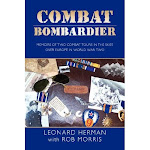Enjoy!
 P-38 Lightning fighter (USA)
P-38 Lightning fighter (USA) Hawker Hurricane Fighter (British)
Hawker Hurricane Fighter (British) Spitfire Fighter (British)
Spitfire Fighter (British) P-51 Mustang fighter (USA)
P-51 Mustang fighter (USA) P-47 Thunderbolt Fighter (USA)
P-47 Thunderbolt Fighter (USA) Fw-190 fighter (German)
Fw-190 fighter (German) Lancaster bomber (British)
Lancaster bomber (British) B-24 Liberator bomber (USA)
B-24 Liberator bomber (USA) Me-109 (German fighter)
Me-109 (German fighter) B-17 Flying Fortress Cockpit, heavily modifed with up-to-date avionics. (USA)
B-17 Flying Fortress Cockpit, heavily modifed with up-to-date avionics. (USA)
I had to throw this one in for sentimental reasons. This is the cockpit of the Cessna 150. I learned how to fly in this plane in 1978. It has about as much in common with the other planes as a Volkswagen Bug has with a Formula racing car.







2 comments:
I'm teaching a 10th grade history class in Eugene, OR, and we're currently studying WWII
aircraft.
My students have been working with an authentic WWII Aircraft Spotter's Guide that was used to train civilians & military personnel to
spot both allied & enemy aircraft.
One of the aircraft described and pictured in the guide is a Piaggio P.123 R. It's perhaps the most intimidating aircraft in the
entire guidebook.
I've been trying to find a photo of this model on the internet to use in a simulation in class that will use projected images of a
variety of aircraft. I've struck out on the Piaggio P.123 R. Not only is it not pictured, I don't even find it mentioned when doing
a general search of info on aircraft.
Would any of you have a clue as to where I might find a photo online of this model, or does anyone have one you could email to me?
FYI, the guide describes the P.123 R as a three-engine (one on the nose, two on the wings), low-wing, bomber monoplane
powered by three Piaggio P.XII RC, 35 eighteen-cylinder, double-row, radial air-cooled engines of 1,300 h.p. each. It had a
long, cigar-like fuselage & twin elliptically-shaped fins & rudders. The guide said that it held the international speed record for
planes over a 1,000 m. course, but it doesn't give the top speed.
Any help tracking down an electronic picture will be appreciated by me & my students.
Thanks.
Stan Paulic
paulic@4j.lane.edu
South Eugene H.S.
Regarding the Cessna 150 instrument panel picture. Image attribution statement: Image captured by Thomas Mahoney Jr. of http://n4846x.com on 9/19/03.
Post a Comment